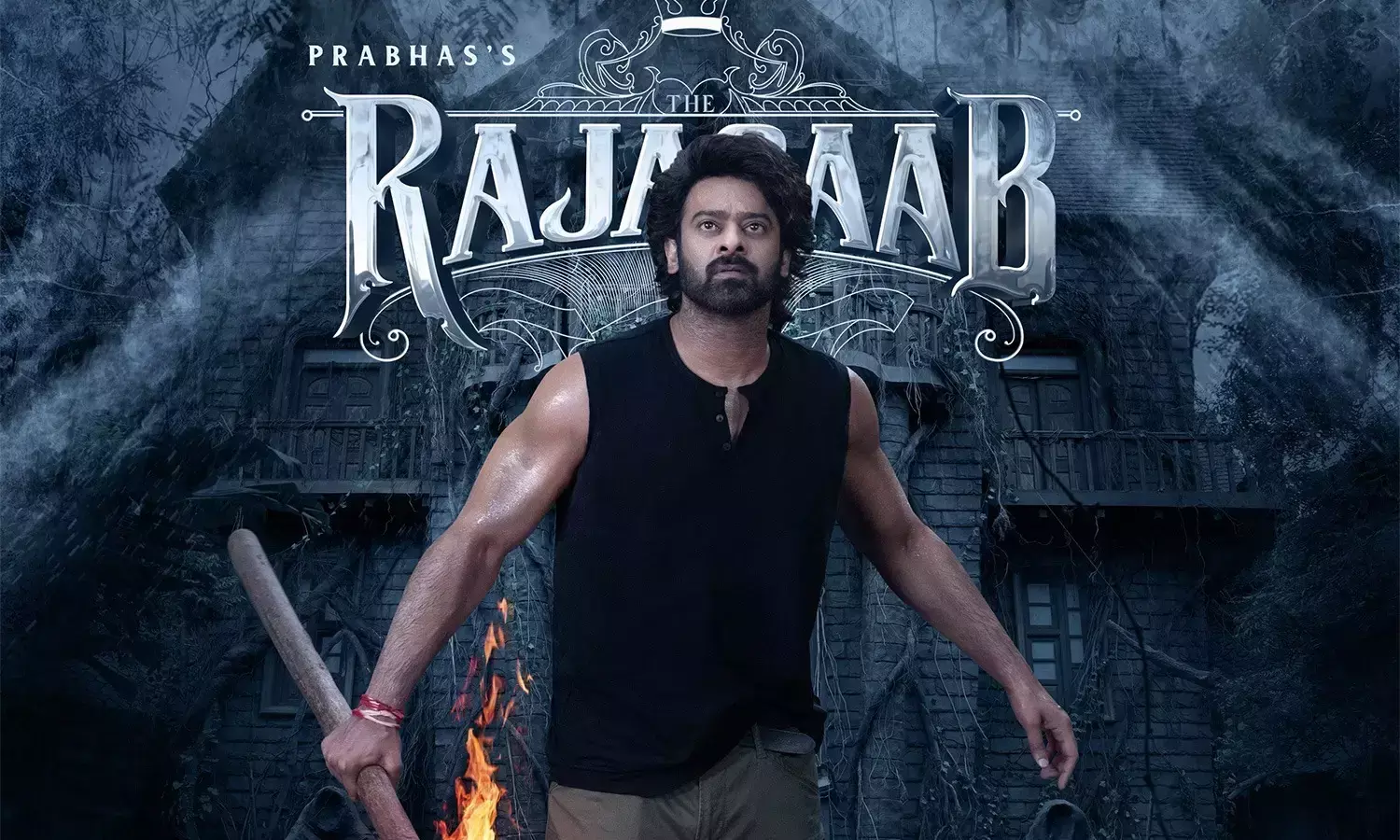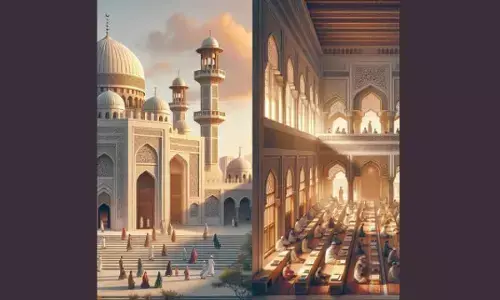An insight into Panchayt Raj System in India

Panchayati Raj is the system of local self government for villages. Because Panchayats are an effective vehicle for people’s participation in administration, planning and democratic process, organisation of village Panchayats has been made a Directive Principle of State Policy (Article 40).
• Panchayati Raj is the system of local self government for villages. Because Panchayats are an effective vehicle for people’s participation in administration, planning and democratic process, organisation of village Panchayats has been made a Directive Principle of State Policy (Article 40).
• Rural India has seen such Panchayats for ages. The new Panchayats are an improvement over the old ones in uniformity, institutional structure and states support.
• The present day Panchayati Raj system was introduced in 1959 on the recommendations of the Balwant Rai Mehta Committee. The committee had been set up in 1956 primarily to suggest measures for improvement in the working of the Community Development Programme and the National Extension Service which were being implemented at that time.
• It recommended a three-tier Panchayati Raj system for proper implementation of the Community Development Council and the Union Government accepted the recommendations of the committee but gave the responsibility of implementing them to the states Governments. For one reason or the other, the implementation was slow and unsatisfactory.
• Constitutional decentralization of power to include a third tier of governance. But the ground level change has been dismal and devolution still remains farfetched.
73rd and 74th Amendment
The 73 rd Amendment (together with the 74th) is rightly called ‘a silent revolution’ for various reasons.
• First of all, the PRIs no longer operate at the whim of state governments and their laws.
(a)They are now a part of the Constitution and enjoy the status of institutions of self-government, as parliament at the federal level and legislative assemblies at the state level.
• The amendment prescribes regular elections every five years and election within six months of the dissolution of any PRI.
(a) To ensure free, fair, and timely elections there is a provision for the setting up of state election commission.
• The most revolutionary provision is the reservation of one-third of the seats for women in local bodies, along with reservation of seats for scheduled castes and scheduled tribes in proportion to their regional populations.
• The amendment lays down 29 functions to be entrusted to the PRIs.
• To maintain a democratic ethos, popular accountability, and transparency, the amendment emphases the need for periodic meetings of the gram sabha, composed of all adults in each village.
(a) These meetings will approve ongoing programmes and financial allocations.
• In brief, the amendment visualises the allocation of funds, functions, and functionaries to these bodies to ensure genuine and effective democratic decentralisation.
Mandatory and Discretionary Powers
The Act mandatory (compulsory) and discretionary (voluntary) provisions: The distinction between the two is that mandatory provisions contain the word “shall”. In the discretionary provisions, on the other hand, the word “may” is used.
Important mandatory provisions are
The establishment in every state (except those with populations below 2 million) of panchayats at the village, intermediate and district levels (Article 243B)
• direct, elections to all- seats in the panchayats (lowest elective tier) at all levels (Article 243 C)
• compulsory elections to panchayats every five years
• If a panchayat is dissolved prematurely, elections must be held within six months, with the newly elected members serving the remainder of the five year term (Article 243E)
• reservation of seats in all panchayats at all levels for SC/ST (Article 243D)
• reservation of one—third of all seats in all panchayats at all levels for women, with the reservation for women applying to the seats reserved for SC/STs (Article 243D)
• indirect elections to the position of panchayat chairperson at the intermediate and district levels (Article 243C)
• reservation of the position of panchayat chairperson at all levels for SC/STs in proportion to their share in the state population (Article 243D)
• reservation of one-third of the positions of chairperson at all three levels for women (Article 243D)
Following are the discretionary provisions
• Transfer of powers and functions to Gram Sabha.
• Mode of election of chairperson of a panchayat at village level.
• Reservation of OBCs.
• To decide the taxes, duties, tolls and fees for which a panchayat shall be authorised.
• To make provision for maintenance of accounts and auditing of panchayats.
Panchayati-Raj
• Panchayati Raj is a three-tier structure of democratic institutions at district, block and village levels namely, Zila Prishad, Panchayat Samiti and Village Panchayats respectively; is a system of local self government aimed at securing gramswaraj; is based on the philosophy of decentralization ; enables pail participative governance; is a suitable institutional arrangement for achieving rural development through people’s initiative.
• Panchayats as local self government institutions and vehicles of development have been part of the Indian system of governance since ancient times.
Lord Ripon’s Resolution on local self-government laid the foundation of local self- government in rural India. The 1882 Resolution was important for two reasons
• it set out general principles for development of local institutions in the future and
• provided the rationale behind functions of local bodies.
Balwant Rai Mehta Committee (1957)
Originally appointed by the Government of India to examine the working of two of its earlier programs, the committee submitted its report in November 1957, in which the term ‘democratic decentralization‘ first appears.
The important recommendations are:
• Establishment of a three-tier Panchayati Raj system – gram panchayat at village level (direct election), panchayat Samiti at the block level and Zila Parishad at the district level (indirect election).
• District Collector to be the chairman of Zila Parishad.
• Transfer of resources and power to these bodies to be ensured.
• It suggested ‘democratic decentralization’ and village reconstruction through the introduction of a three tier system of panchayats. The committee felt that democratic government composed of controlled and directed by popular representation of the local areas is necessary the local level. The Report strongly recommended that training requirements of Panchayat personnel should be given high priority.
• The existent National Development Council accepted the recommendations. However, it did not insist on a single, definite pattern to be followed in the establishment of these institutions. Rather, it allowed the states to devise their own patterns, while the broad fundamentals were to be the same throughout the country.
• Rajasthan (1959) adopted the system first, followed by Andhra Pradesh in the same year. Some states even went ahead to create four-tier systems and Nyaya panchayats, which served as judicial bodies.
Ashok Mehta Committee
• Ashok Mehta Committee to review and report on the PR1s. It suggested change in the Balwant Rai Mehta pattern of PRIs. The three- tier system of PRIs was to be replaced by a two- tier i.e. Zilla Parishad at the district level and Mandal Panchayat (consisting of a number of villages) below it; five year term should not be cut short; district should be the first point of decentralization; etc.
• Three-tier system to be replaced by a two-tier system.
• Political parties should participate at all levels in the elections.
• Compulsory powers of taxation to be given to these institutions.
• Zila Parishad to be made responsible for planning at the state level.
• A minister for Panchayati Raj to be appointed by the state council of ministers.
• Constitutional recognition to be given to Panchayati Raj institutions.
Unfortunately, the Janata government collapsed before action could be taken on these recommendations.
G.V.K. Rao Committee
G.V.K. Rao Committee- was set up by the Planning Commission in 1985. It recommended for the revival of Panctiayati Raj institutions and highlighted the need to transfer powers to democratic bodies at the local level. The two important suggestions that this committee made were:
• That the ‘district’ should be the basic unit of planning and programme implementation and
• Zilla Parishad could, therefore, become the principal body for the management of all development programmes which can be handled at that level.
• Zila Parishad to be given prime importance and all developmental programs at that level to be handed to it.
• Post of DDC (District Development Commissioner) to be created acting as the chief executive officer of the Zila Parishad.
• Regular elections to be held
L.M. Singhvi Committee
• The Government of India set up in 1986 L.M. Singhvi Committee to prepare a concept paper on the revitalisation of the Panchayati Raj institutions. It recommended that the Panchayati Raj should be constitutionally recognised, protected and preserved, by the inclusion of a new chapter in the Constitution.
• Constitutional recognition for PRI institutions.
• Nyaya Panchayats to be established for clusters of villages
• Though the 64th Constitutional Amendment bill was introduced in the Lok Sabha in 1989 itself, Rajya Sabha opposed it.
• It was only during the Narasimha Rao government’s term that the idea finally became a reality in the form of the 73rd and 74th Constitutional Amendment acts, 1992.
Gram Sabha
• Gram Sabha means a body consisting of the electorate of the village
• Intermediate level means a level between the village and district levels
• specified by the Governor of a State by public notification
Art. 243A
• Art. 243A says that the powers exercised by and the functions performed by Gram Sabha are devolved to them by State Legislature. Gram Sabha has the responsibility to take decisions in common public interest, and to monitor the performance of elected representatives and government officials.
Art. 244 H and 243-I
Art. 244 H and 243-I deal with the financial provisions. Art. 243-I says that the Legislature of a State may:
• Authorize a Panchayat to levy, collect and appropriate such taxes, duties, tolls and fees in accordance with such procedure and subject to such limits;
• assign to a Panchayat such taxes, duties, tolls and fees levied and collected by the State Government for such purposes and subject to such conditions and limits;
Art. 244
• Art. 244 deals with Constitution of Finance Commission to review financial position of i.e. Panchayats: The Governor of a State shall, within one year from the commencement of the Constitution (Seventy-third Amendment) Act,, 1992, and thereafter at the expiration of every fifth year, constitute a Finance Commission to review the financial position of the Panchayats and to make recommendations to the Governor.
State Finance Commission
• Its composition, qualifications of its members and the manner in which they shall be selected; and functions of the Commission are laid down by law by the State Legislature.
Art. 243K
• Art. 243K relates to elections to the Panchayats
• The superintendence, direction and control of the preparation of electoral rolls for, and the conduct of, all elections to the Panchayats shall be vested in a State Election Commission consisting of a State Election Commissioner to be appointed by the Governor.
District Planning Committees (DPSc)
• DPCs should be constituted as per Article 243 ZD in all states except Jammu & Kashmir, Meghalaya, Mizoram, Nagaland and the NCT of Delhi. All states must accordingly enact legislations for constitution of the DPCs and issue notifications bringing them into effect.
Composition
• The DPC is generally composed of elected members of the local bodies within the district, both rural and urban, as well as some nominated members.
• The number of members varies with the population size of the districts larger the population, more the members.
• The ratio of members from Panchayats and ULBs is based on the ratio in which the population of the district is divided between rural and urban areas
Functions, Role and Responsibilities of DPCs
• The DPC is envisaged to play a nodal role in the district planning process by consolidating rural and urban plans prepared by the villages and towns in the district and then preparing a draft development plan for the district on the basis of the plans so received from within the district:
Consolidation of rural and urban plans
• Consolidation of rural and urban plans is one of the key tasks of the DPC and is also of great significance in the light of urban expansion into rural areas.
PESA
• The Parliament passed Provisions of the Panchayats (Extension to the Scheduled Areas) Act, 1996 to extend the provisions of the 73rd Constitutional Amendment to the Schedule V Areas of the country.
• The Fifth Schedule covers Tribal areas (scheduled areas) in 9 states of India namely Andhra Pradesh, Jharkhand, Gujarat, Himachal Pradesh, Maharashtra, Madhya Pradesh, Chattisgarh, Orissa and Rajasthan.
• Bihar had Scheduled Areas before the formation of Jharkhand but after the bifurcation, the tribal population in Bihar is insignificant.
PESA came into force in 1996. Under the Act, the Gram Sabha has been vested with powers for
• Ownership of minor forest produce
• Development, plans approval
• Selection of beneficiaries’ under various programmes
• Consultation on land acquisition
• Manage minor water bodies
• Control mineral leases
What are Panchayats and Municipalities?
• Panchayat and Municipality are the generic terms for the governing body at the local level. Both exist as three tier systems – at the lower, intermediate and upper levels.
• The 73rd Constitutional Amendment act provides for a Gram Sabha as the foundation of the Panchayati Raj system. It is essentially a village assembly consisting of all the registered voters in the area of the panchayat. The state has the power to determine what kind of powers it can exercise, and what functions it has to perform at the village level.
• The 74th Constitutional Amendment act provides for three types of Municipalities:
1. Nagar Panchayat for a transitional area between a rural and urban area.
2. Municipal Council for a small urban area.
3. Municipal Corporation for a large urban area.
• Municipalities represent urban local self-government.
• Most of the provisions of the two acts are parallel, differing only in the fact that they are being applied to either a Panchayat or a Municipality respectively.
• Each Gram sabha is the meeting of a particular constituency called ward.
• Each ward has a representative chosen from among the people themselves by direct election.
• The chairperson of the Panchayat or Municipality at the intermediate and district level are elected from among these representatives at the immediately lower level by indirect election.
Types of Urban Local Government
There are eight types of urban local governments currently existing in India:
1. Municipal Corporations.
2. Municipality.
3. Notified area committee.
4. Town area committee.
5. Cantonment board.
6. Township.
7. Port trust.
8. Special purpose agency.
How the elections are held in the local government bodies?
• All seats of representatives of local bodies are filled by people chosen through direct elections.
• The conduct of elections is vested in the hands of the State election commission.
• The chairpersons at the intermediate and district levels shall be elected indirectly from among the elected representatives at the immediately lower level.
• At the lowest level, the chairperson shall be elected in a mode defined by the state legislature.
• Seats are reserved for SC and ST proportional to their population.
• Out of these reserved seats, not less than one-third shall be further reserved for women.
• There should be a blanket reservation of one-third seats for women in all the constituencies taken together too (which can include the already reserved seats for SC and ST).
• The acts bar the interference of courts in any issue relating to the election to local bodies.
What are the Qualifications needed to be a member of the Panchayat or Municipality?
• Any person who is qualified to be a member of the state legislature is eligible to be a member of the Panchayat or Municipality.
• “But he shall not be disqualified on the ground that he is less than 25 years of age if he has attained the age of 21 years”
• This means that unlike the state legislature, a person needs to attain only 21 years of age to be a member of panchayat/municipality.
What is the duration of the Local Government bodies?
• The local governing bodies are elected for a term of five years.
BY Gudipati Rajendera Kumar
















